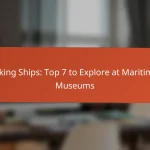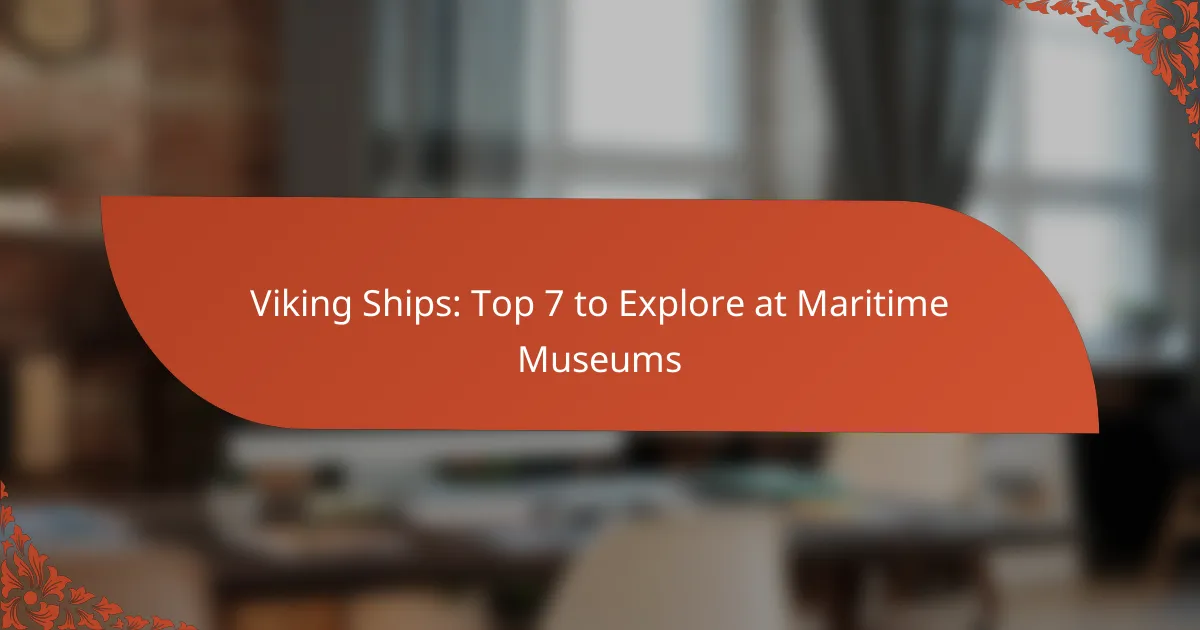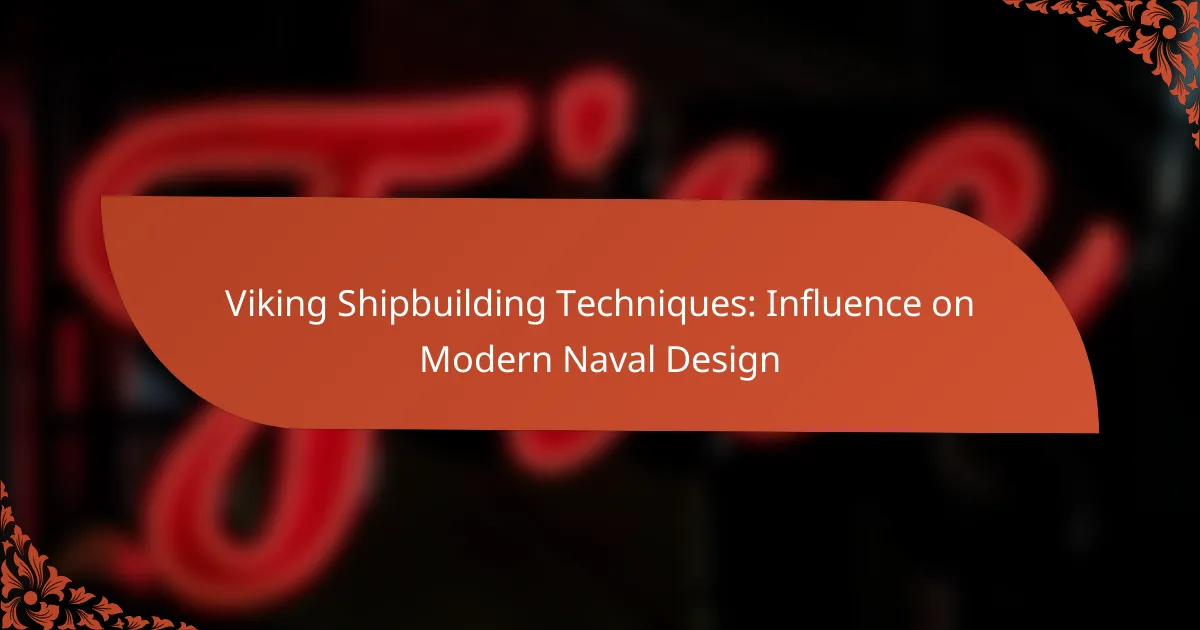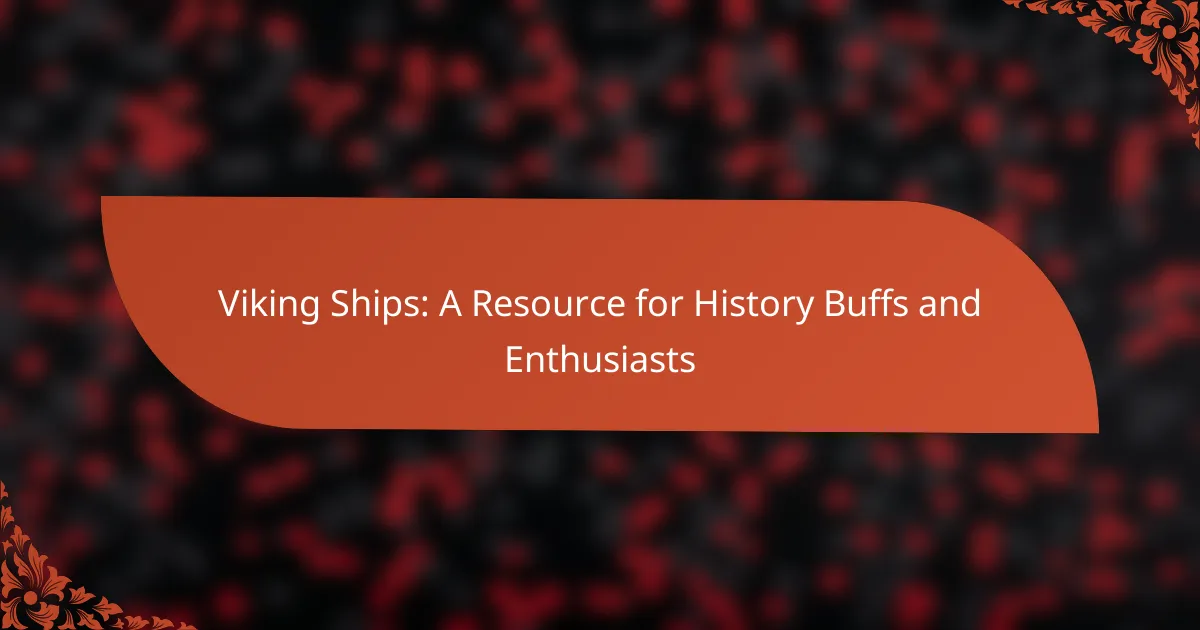Scandinavia boasts a rich maritime heritage, with several museums dedicated to the exploration of remarkable Viking ships that highlight their historical significance and craftsmanship. Notable vessels like the Oseberg and Gokstad ships in Oslo, along with the Skuldelev ships in Roskilde, offer visitors a glimpse into the Viking era’s maritime culture and innovations. Planning your visit can enhance the experience, as many museums provide special exhibitions and guided tours to delve deeper into this fascinating history.
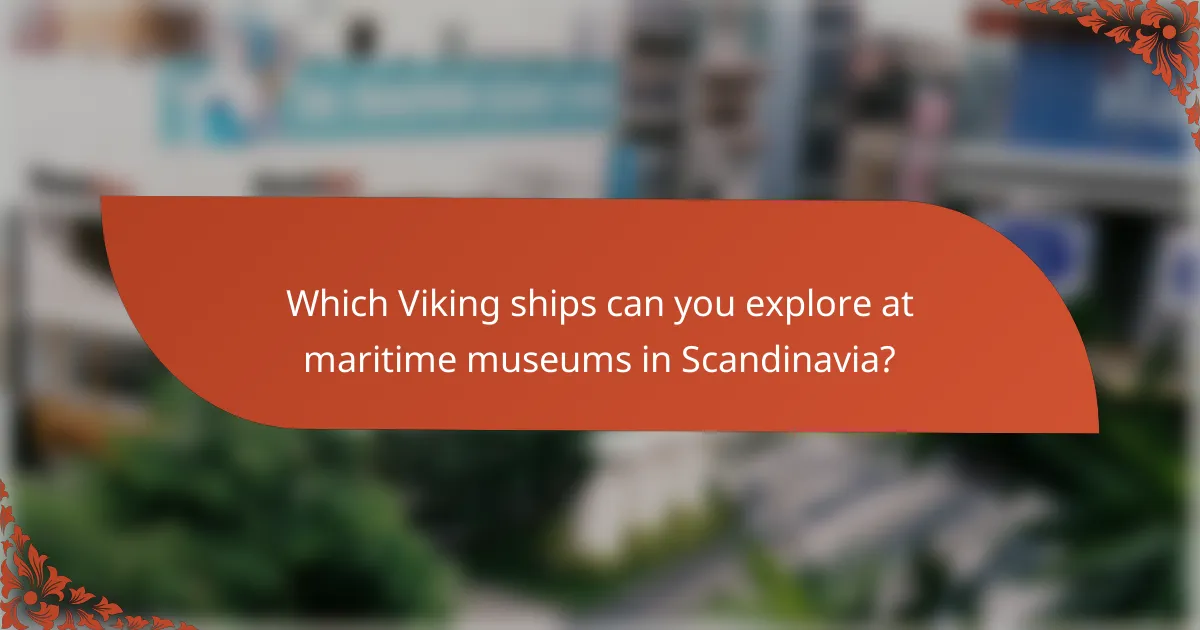
Which Viking ships can you explore at maritime museums in Scandinavia?
Scandinavia is home to several maritime museums where visitors can explore remarkable Viking ships, each showcasing unique historical significance and craftsmanship. Notable examples include the Oseberg and Gokstad ships in Oslo, the Skuldelev ships in Roskilde, and others in Denmark, providing insights into Viking maritime culture.
Oseberg Ship at the Viking Ship Museum, Oslo
The Oseberg Ship is one of the best-preserved Viking ships, dating back to the early 9th century. Discovered in a burial mound, it features intricate carvings and a unique design that reflects the artistry of the Viking Age.
Visitors can view the ship’s impressive structure and artifacts found alongside it, including tools and textiles, which offer a glimpse into the lives of the people who built and used it. The museum provides detailed explanations of the ship’s significance in Viking history.
Gokstad Ship at the Viking Ship Museum, Oslo
The Gokstad Ship, also housed in the Viking Ship Museum in Oslo, is another remarkable example of Viking shipbuilding. This ship, dating from the late 9th century, was used for both trade and warfare, showcasing the versatility of Viking vessels.
Its sleek design and robust construction make it an excellent representation of Viking engineering. The museum features exhibits that highlight its historical context and the maritime skills of the Vikings.
Skuldelev Ships at the Viking Ship Museum, Roskilde
The Skuldelev Ships, excavated from a 11th-century burial site in Roskilde, consist of five vessels that illustrate different types of Viking ships. These ships were used for various purposes, including cargo transport and warfare.
At the museum, visitors can explore replicas and original remains, gaining insights into the diverse shipbuilding techniques and the maritime activities of the Vikings. The exhibits emphasize the importance of these ships in Viking society.
Drakkar at the Viking Museum, Gudvangen
The Drakkar, often referred to as a dragon ship, is a striking representation of Viking longships, known for their speed and agility. Located in Gudvangen, this ship is a popular attraction that captures the imagination of visitors.
The museum offers interactive displays and reenactments, allowing guests to experience the Viking way of life. The Drakkar serves as a symbol of Viking exploration and conquest across the seas.
Viking Ship at the National Museum of Denmark, Copenhagen
The Viking Ship at the National Museum of Denmark is a significant artifact that showcases the maritime prowess of the Vikings. This ship, along with other exhibits, provides a comprehensive overview of Viking naval history.
Visitors can learn about the ship’s construction, its role in trade and exploration, and the cultural significance of seafaring in Viking society. The museum’s collections highlight the technological advancements made by the Vikings in shipbuilding.
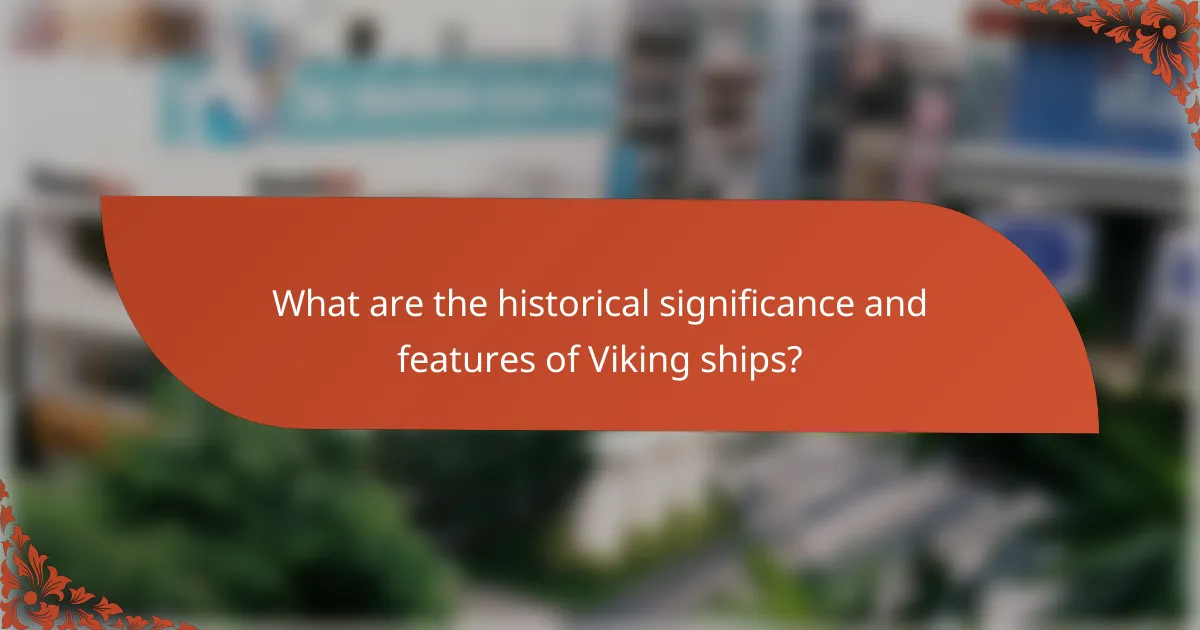
What are the historical significance and features of Viking ships?
Viking ships played a crucial role in the expansion of Norse culture and trade from the 8th to the 11th century. These vessels were not only engineering marvels of their time but also symbols of Viking exploration, warfare, and commerce.
Longship design for speed and agility
Viking longships were designed for both speed and maneuverability, featuring a sleek hull and a shallow draft that allowed them to navigate rivers and coastal waters. The long, narrow shape reduced drag, enabling swift travel over long distances.
Typically, these ships ranged from 20 to 30 meters in length and could carry around 20 to 60 warriors. The use of a single square sail, combined with oars, provided flexibility in various wind conditions, making them effective for raiding and exploration.
Trade and exploration capabilities
Viking ships were instrumental in establishing trade routes across Europe, Asia, and even North America. Their ability to travel across open seas and navigate inland rivers facilitated the exchange of goods such as furs, timber, and metals.
These vessels could reach distant lands quickly, with voyages often lasting several weeks. The versatility of the longship allowed Vikings to engage in both peaceful trade and aggressive raids, significantly impacting the regions they encountered.
Cultural importance in Viking society
In Viking society, ships were more than just transportation; they were a reflection of status and identity. Ownership of a well-crafted ship indicated wealth and power, often leading to social prestige within communities.
Ships were also central to Viking funerary practices, with notable leaders buried in ships to signify their importance. This cultural reverence for ships underscored their role in both daily life and the spiritual beliefs of the Vikings.

How to plan a visit to maritime museums featuring Viking ships?
Planning a visit to maritime museums with Viking ships involves researching locations, checking opening hours, and understanding ticketing options. Many museums offer special exhibitions and guided tours that enhance the experience, so it’s beneficial to look into these before your visit.
Best times to visit Scandinavian maritime museums
The best times to visit Scandinavian maritime museums are typically during the late spring to early autumn months, from May to September. During this period, the weather is generally mild, and many museums host outdoor events and activities.
Weekdays tend to be less crowded than weekends, making it easier to explore exhibits and engage with staff. If possible, aim for early morning visits to enjoy a quieter experience.
Ticket prices and guided tours
Ticket prices for maritime museums featuring Viking ships usually range from around 10 to 20 EUR for adults, with discounts available for children, students, and seniors. Some museums may offer family passes or group rates, which can be more economical.
Guided tours often cost extra but provide valuable insights into the history and significance of the exhibits. Consider booking these in advance, especially during peak tourist seasons, to secure your spot.
Accessibility options at museums
Most Scandinavian maritime museums strive to be accessible to all visitors. Facilities typically include ramps, elevators, and designated parking spaces for individuals with disabilities. It’s advisable to check the specific museum’s website for detailed accessibility information.
Some museums offer guided tours tailored for visitors with special needs, ensuring everyone can enjoy the rich history of Viking ships. Always contact the museum ahead of your visit to confirm available services and accommodations.
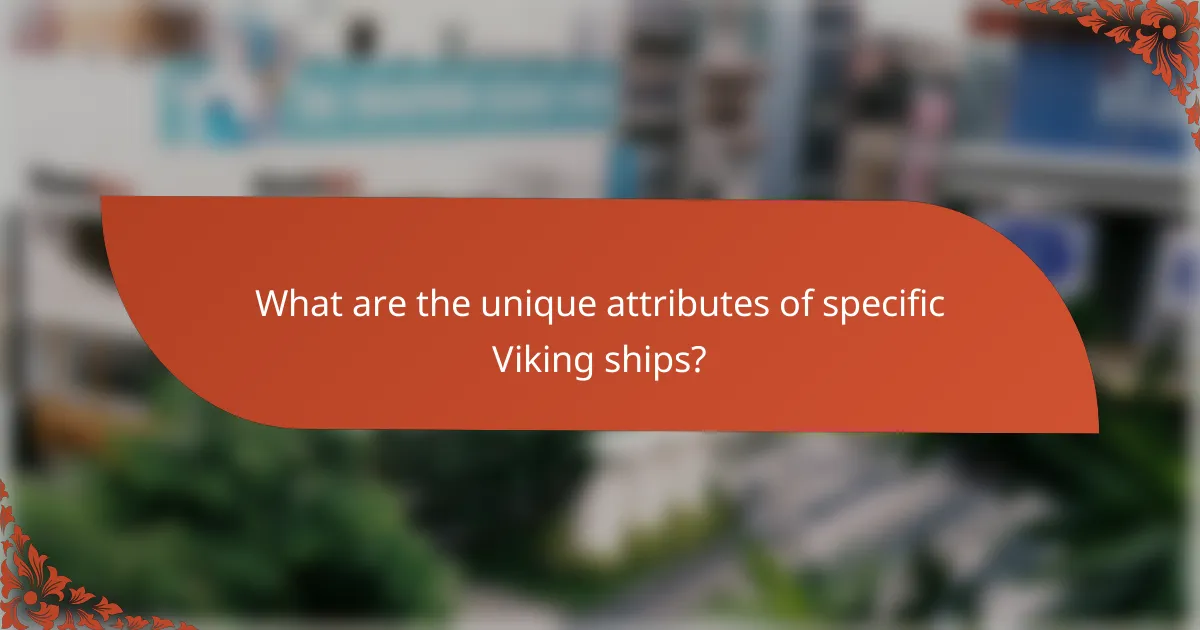
What are the unique attributes of specific Viking ships?
Each Viking ship possesses distinct characteristics that reflect its purpose, construction, and historical context. These attributes can provide insights into Viking maritime technology and their way of life.
Oseberg Ship’s burial artifacts
The Oseberg ship, discovered in Norway, is renowned for its rich burial artifacts that highlight the craftsmanship and cultural practices of the Vikings. Among the items found were intricately carved wooden sleighs, textiles, and various tools, which suggest the high status of the individuals buried within.
These artifacts not only showcase the artistic skills of the Viking Age but also provide valuable information about their daily life, trade practices, and beliefs. The presence of ceremonial objects indicates the importance of ritual in Viking society.
Gokstad Ship’s construction techniques
The Gokstad ship, also from Norway, exemplifies advanced Viking shipbuilding techniques, particularly its clinker-built design. This method involved overlapping planks, which enhanced the ship’s strength and flexibility, making it well-suited for both ocean voyages and river navigation.
Constructed around the late 9th century, the Gokstad ship’s design reflects the Vikings’ understanding of hydrodynamics and their need for speed and stability. The ship’s robust structure allowed it to carry significant cargo while navigating various water conditions.
Skuldelev Ships’ archaeological findings
The Skuldelev ships, a group of five vessels found in Denmark, provide a diverse look at Viking maritime practices. Each ship served different purposes, from fishing to warfare, showcasing the versatility of Viking ship design.
Archaeological findings from the Skuldelev ships include remnants of sails, rigging, and weaponry, which illustrate the Vikings’ naval capabilities. The variation in ship types indicates a strategic approach to maritime activities, adapting to specific needs and environments.
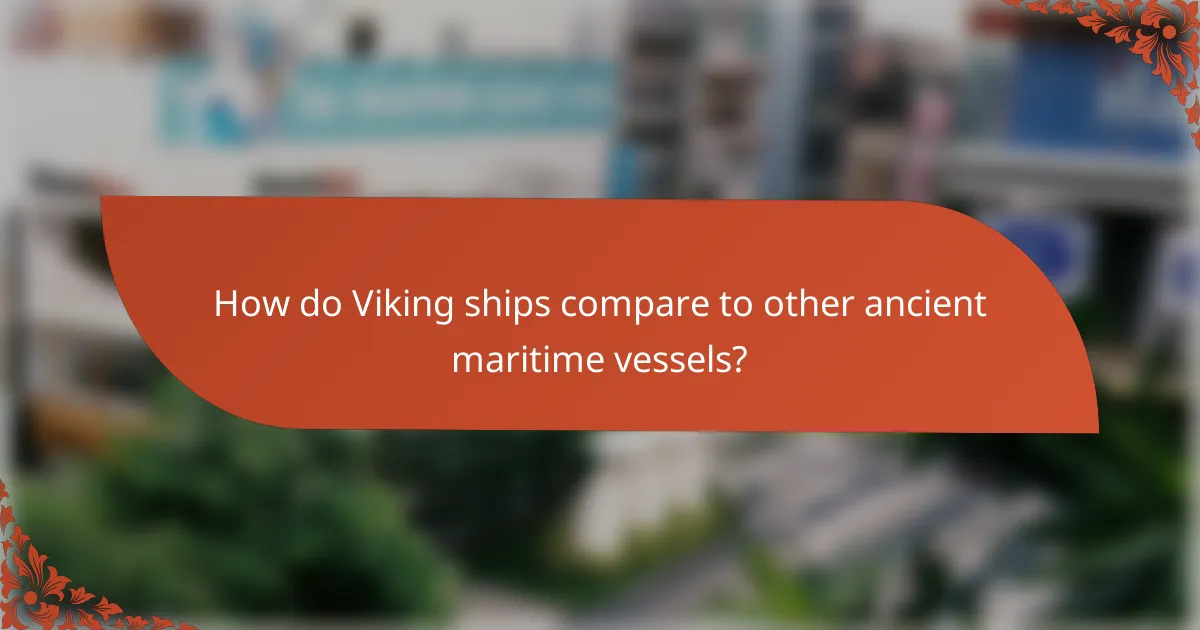
How do Viking ships compare to other ancient maritime vessels?
Viking ships are distinct for their long, narrow design, allowing for speed and agility, which sets them apart from many other ancient maritime vessels. Their construction techniques and adaptability for both open sea and shallow waters highlight their unique capabilities in navigation and trade.
Comparison with Roman galleys
Roman galleys were primarily designed for warfare and featured multiple rows of oars, making them powerful but less versatile than Viking ships. While galleys could carry larger crews and heavier armaments, Viking ships excelled in speed and could navigate shallower waters, allowing for surprise attacks and quick retreats.
The hull design of Viking ships, with a clinker-built method, provided flexibility and strength, which contrasted with the heavier, more rigid construction of Roman galleys. This made Viking vessels better suited for raiding and exploration along coastlines and rivers.
Differences from Polynesian canoes
Polynesian canoes are known for their double-hulled design, which offers stability and the ability to carry substantial cargo over long distances. In contrast, Viking ships, typically single-hulled, prioritized speed and maneuverability, making them ideal for quick raids and coastal navigation.
While both types of vessels were adept at ocean travel, Viking ships were built for different purposes, focusing on warfare and trade in the North Atlantic, whereas Polynesian canoes were designed for exploration and trade across the vast Pacific Ocean.
Similarities with Mediterranean triremes
Both Viking ships and Mediterranean triremes were designed for speed and agility, making them effective for their respective naval engagements. Triremes utilized multiple tiers of oars, while Viking ships relied on a single row of oars and sails, yet both achieved remarkable maneuverability in battle.
Additionally, both types of vessels were constructed to withstand the rigors of open sea travel, with strong hull designs. However, Viking ships had the advantage of being able to navigate shallow waters, which was less feasible for the heavier triremes used primarily in the Mediterranean Sea.

What are the emerging trends in Viking ship research and preservation?
Emerging trends in Viking ship research and preservation focus on advanced technologies and interdisciplinary approaches. Innovations such as 3D scanning, digital modeling, and conservation techniques are enhancing our understanding and preservation of these historical vessels.
Use of Technology in Preservation
Modern technology plays a crucial role in the preservation of Viking ships. Techniques like laser scanning and photogrammetry allow researchers to create detailed digital models of ships, which can be used for analysis and restoration without physical intervention. This minimizes damage while ensuring accurate documentation.
Additionally, the use of non-invasive materials for conservation helps maintain the integrity of the original wood. For instance, consolidants that penetrate and stabilize the wood fibers are increasingly being employed to prolong the lifespan of these artifacts.
Interdisciplinary Research Approaches
Interdisciplinary collaboration is becoming more common in Viking ship research. Historians, archaeologists, and marine engineers are working together to gain a holistic understanding of shipbuilding techniques and maritime culture. This collaboration leads to more comprehensive insights into the construction and use of Viking ships.
For example, studies combining historical texts with archaeological findings can reveal the socio-economic factors influencing ship design. Such approaches help contextualize Viking ships within broader historical narratives.
Public Engagement and Education
Engaging the public in Viking ship research is a growing trend. Museums are increasingly offering interactive exhibits and educational programs that allow visitors to learn about shipbuilding and maritime history. This not only raises awareness but also fosters a sense of community involvement in preservation efforts.
Workshops and demonstrations can provide hands-on experiences, making the history of Viking ships accessible to a wider audience. Such initiatives encourage support for ongoing preservation projects and research funding.



